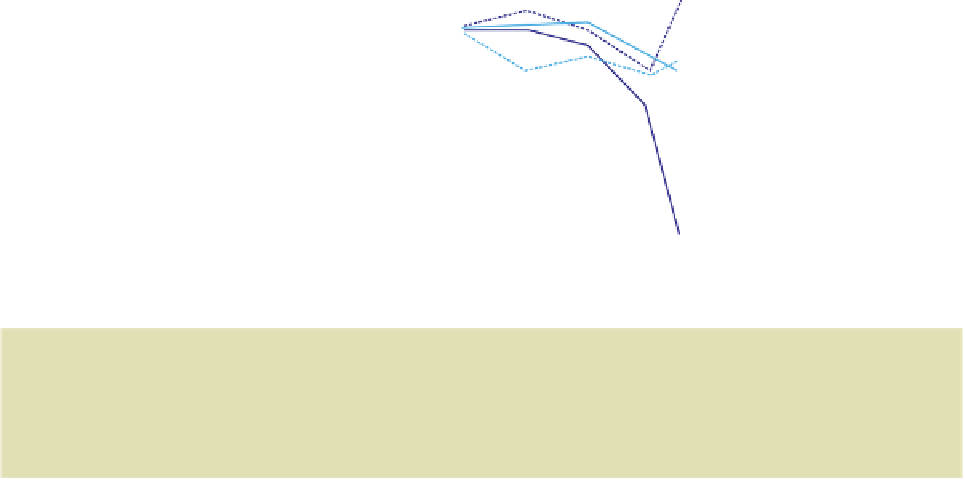Biology Reference
In-Depth Information
(a)
(b)
1.1
1.02
1
1
0.98
0.9
0.96
0.8
0.94
Male ES
Male Wing
Female ES
Female wing
Male ES
Male Wing
Female ES
Female wing
0.7
0.92
0.6
0.9
0.5
0.88
0.14
0.12
0.1
0.08
0.06
0.04
0.02
0
0.14
0.12
0.1
0.08
0.06
0.04
0.02
0
Food treatment (g corn per egg)
Food treatment (g corn per egg)
Fig. 14.10
Male eye span and wing size in response to food treatment, in the stalk eyed fly,
T. dalmanni
. Male
eye span (ES) showed a much steeper decline with reduced food than male wing size, female eye span or
female wing size. This result held when analysing absolute eye span and wing size (a), as well as when variation
in body size was controlled for with multiple regressions (b). From Cotton
et al
. (2004). With permission of the
Royal Society. Photograph of a flying male. Photo © Samuel Cotton.
is that high-quality individuals should be favoured to produce the signal (e.g. ornament),
whereas low-quality individuals should not. This 'strong condition dependence'
contrasts with indices, which are expected to vary more gradually with quality,
alongside other measures of size or quality, as with the croaks of toads and roars of deer
(the fact that this has to occur is what defines an index).
Cotton
et al
. (2004a) tested this with a laboratory population of
T. dalmanni
,
manipulating condition by varying the amount of pureed corn that they fed to larvae.
They found that absolute male eye span decreased sharply in the lower condition
treatments, and that this decline was much greater than that with female eye span or
wing traits (Fig. 14.10a). This greater decline in male eye span also persisted when they
statistically controlled for variation in body size across the treatments, demonstrating
that poorer condition males had relatively smaller eye spans (Fig. 14.10b). Overall,
these results suggest that, as predicted by the handicap model, high-quality males
allocate more resources to the sexual signal of eye span.
The eye stalks of
male stalk-eyed
flies show strong
condition
dependence, with
larger males
having relatively
larger eye spans
Badges of status
Signals of quality or status can sometimes have low productions costs. In the Harris
sparrow (
Zonotrichia querula
), individuals with larger black bibs on their chest are the
dominants and they always displace pale birds from food supplies (Rohwer & Rohwer,
1978). Similar visual signals occur in a number of other bird species (Fig. 14.11). Given
that such 'badges of status' are likely to have low production costs, why don't subordinate
sparrows grow bigger bibs and enjoy a rise in status? In other words, what maintains
the honesty of these signals? Dawkins and Krebs (1978; Krebs & Dawkins, 1984)
suggested that individuals who falsely signalled their ability would pay social costs,
Relatively
cost-free signals
of status …



































































